One of the best parts about traveling to the islands is eating the fruit in Hawaii.
Hawaiian fruit is famous around the world. The eight small islands may be part of the United States, but they are smack in the middle of the Pacific Ocean, far away from everything.
Except the flocks of tourists visiting every winter who crave the sun, sand and warmth of locals. Life in Hawaii seems slower, friendlier and far more delicious with its tropical flora and fauna.
Hawaiian Fruit Wasn’t Always Hawaiian
Lush, dense tropical forests are usually the first thing that comes to mind about Hawaii. But Hawaii wasn’t always that way.
And most of the fruit we know now as Hawaiian fruit didn’t exist before 400 AD when Polynesians arrived and brought bananas, breadfruit, coconut, noni and mountain apples.
In fact, exotic fruit in Hawaii weren’t really prevalent until after 1835.
The creation of the first sugarcane plantation on Kauai island brought in many immigrants and visitors who also brought their favourite fruit trees.
Exotic Fruits Around the World
The Hawaiian islands exist as they do today because of immigrants over the years who came from the Philippines, China, Korea, Portugal to work on the sugarcane plantations.
And of course the many visitors who fell in love and could not bear to leave. At one time the forests were bushes and the plants and animals were limited.
But that all changed as people brought with them everything from taro to pigs.
I cannot imagine what the islands would have looked like without passion fruit or coconut trees.
And so while the most famous Hawaiian fruits weren’t native to the islands, they’ve been around for so long they are part of modern Hawaii.
23 Incredible Fruit in Hawaii
Passionfruit (Lillikoi)
Passionfruit is known throughout Latin America as maracuya, naranjilla or lulo. It’s a common Cuban fruit and is a very popular fruit in Hawaii known as lilliko’i.
It has a viscous like texture and is often used as an ingredient, such as Hawaiian POG breakfast juice, which is made from passionfruit, orange, guava.
It’s also common in breakfast bowls, desserts, ice cream and Hawaiian lilikoʻi butter.
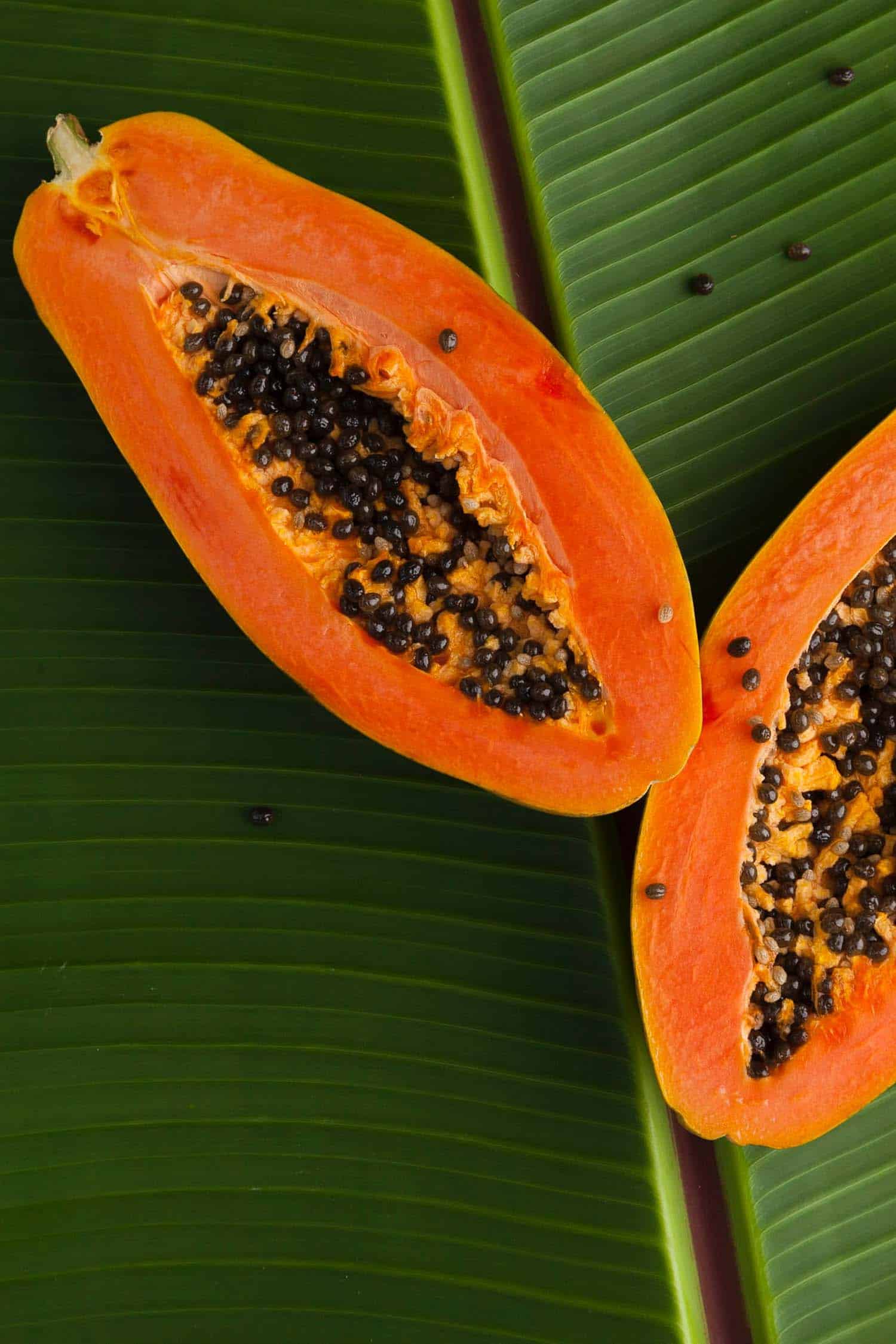
Papaya
No matter how amazing Hawaiian fruit are, I just can’t get on board with papaya.
It has a soft texture that feels like butter and often a flavour that can resemble stinky feet.
But papaya is everywhere in Hawaii. They grow large and found all year round.
You’ll often find them in a fruit salad as there are far more papaya in Hawaii than people who want to eat them.
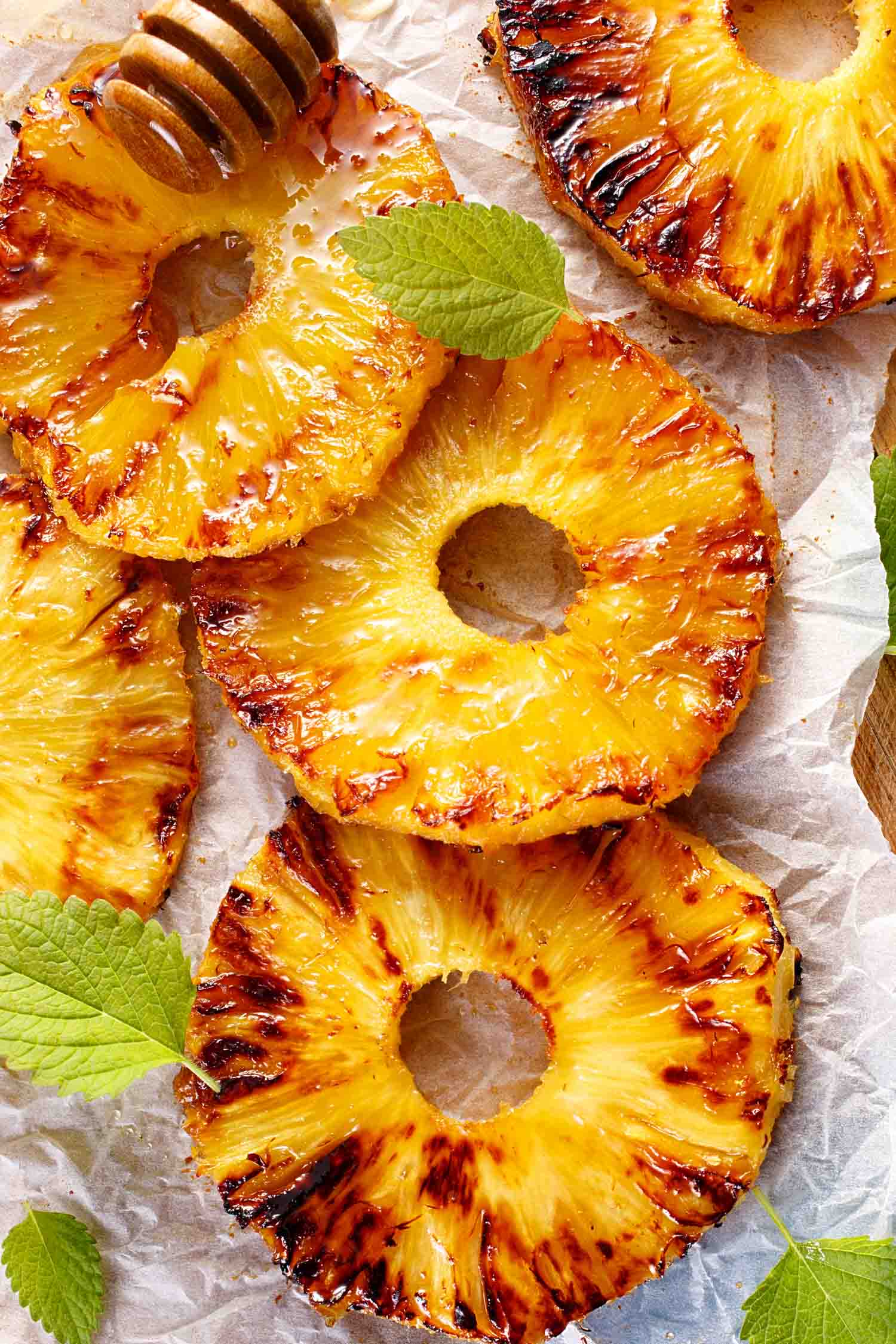
Pineapple
Pineapple really should have been the first Hawaiian fruit on this list because it’s known to be so sweet and juicy.
Although it is not a native fruit in Hawaii, Maui once supplied 80% of canned pineapples.
That number has dropped to 10%, but a tour to Maui Gold Pineapple Company is still one of the best things to do in Maui.
I was shocked when I visited to see so much of production still done by hand. It’s not an easy job.
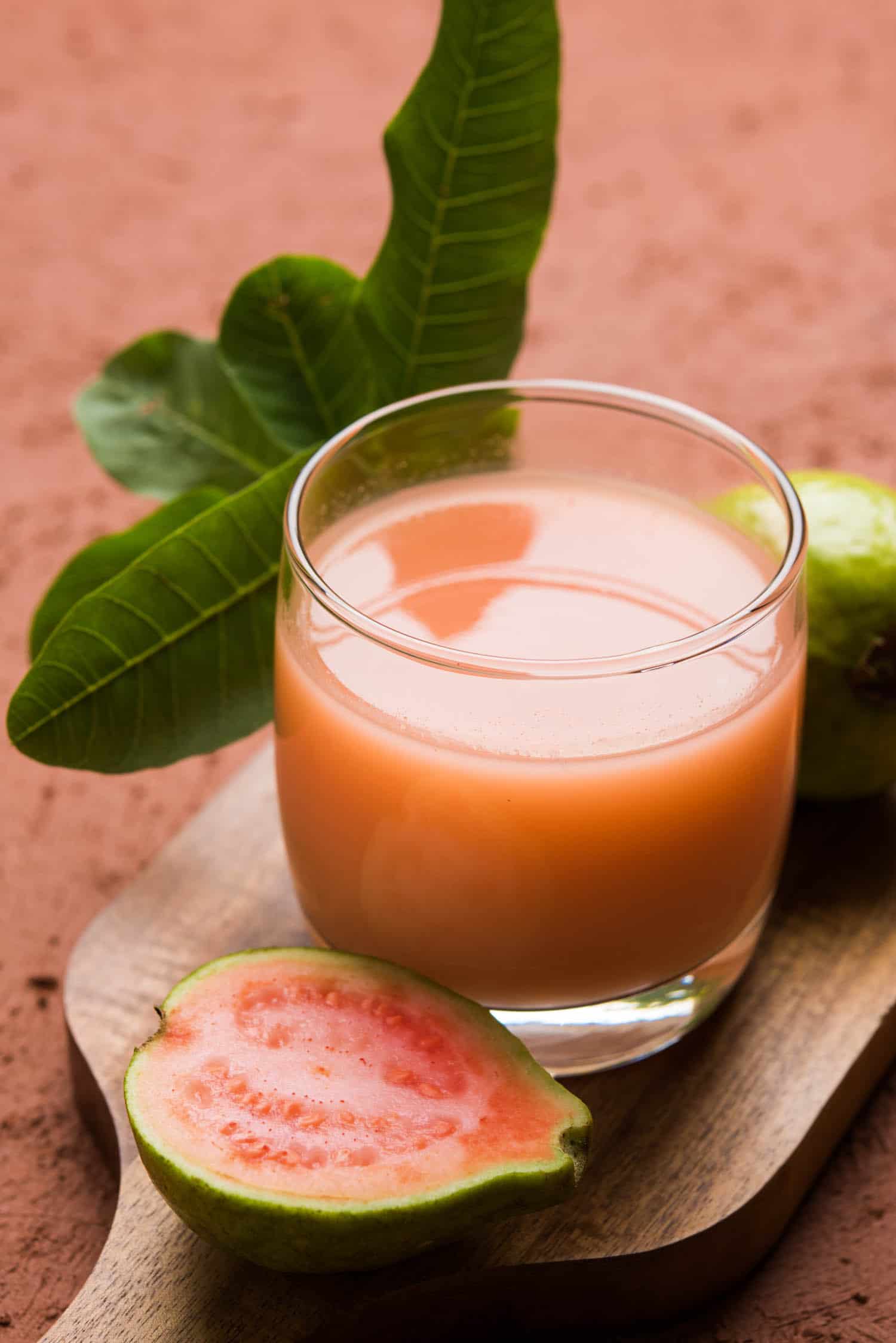
Guava
Another one of the famous ingredients in POG juice, there are two guava growing seasons in Hawaii. So it’s very likely you’ll be in Hawaii during one of these times.
Look for soft guavas, which are ready to eat. You can eat their flesh or put them in breakfast bowls and guava juice on its own is delicious.
Strawberry Guava
This Hawaiian fruit is a smaller version of the regular guava and is red. Because of its colour and flavour with notes of strawberry it is called a strawberry guava.
Known locally as waiawī, it is not a native fruit in Hawaii and was first grown in Kauai.
It is actually is considered to be an invasive species from Brazil, are local governments are trying to cut them down.
Locals try to use it as much as possible and curb the population as one tree can have hundreds of fruit.
They are a bit tangy and sour so it is common to find waiawī used in fresh fruit juices and preserves.
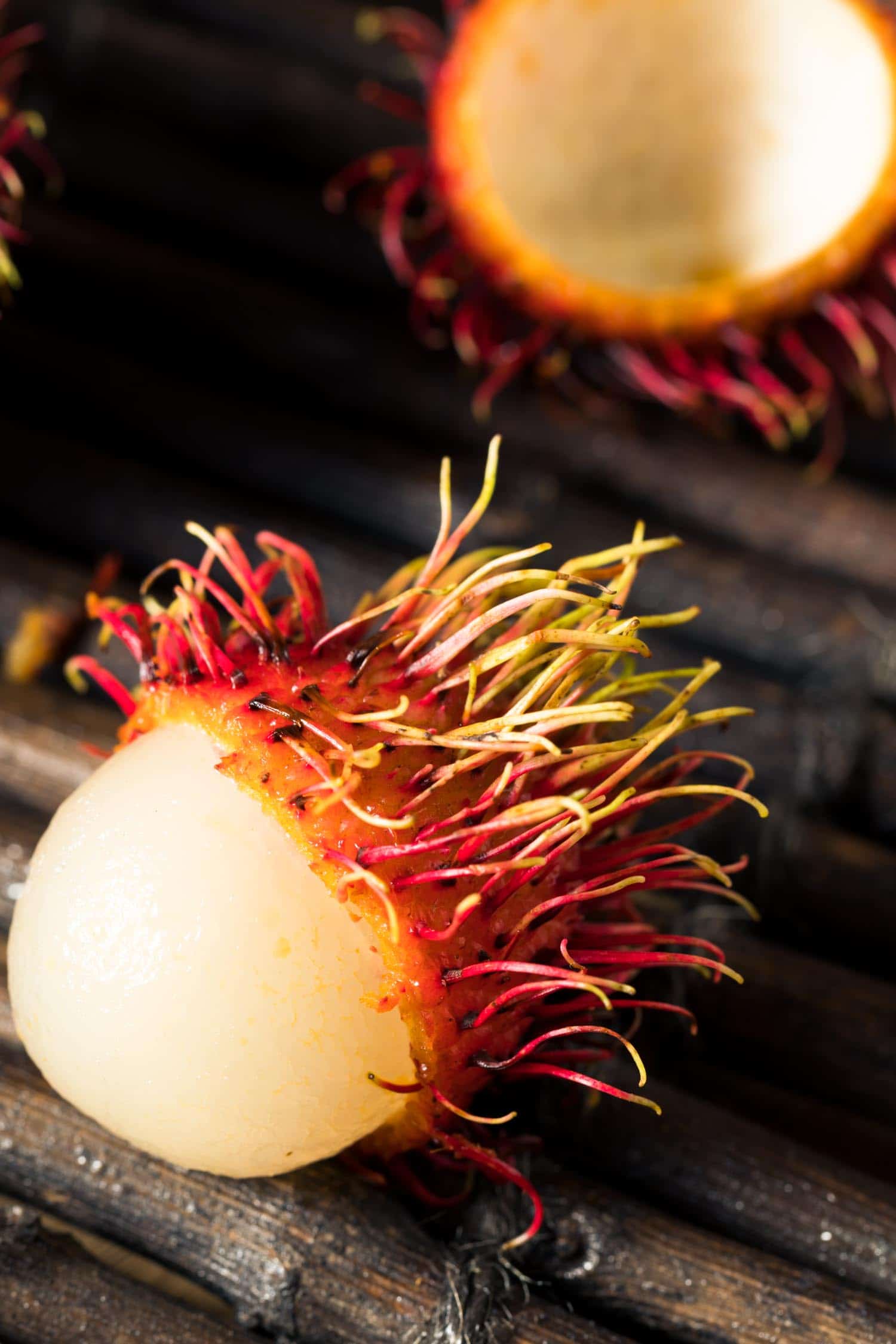
Rambutan
One of the hairiest fruit in Hawaii you’ll find, rambutan are originally from Southeast Asia.
They have a very short harvest season. You can find them locally in farmers markets in February and March and are found on most restaurant menus.
They are originally from South East Asia and one of the most popular fruits in Cambodia.
Lychee
Another strange looking fruit in Hawaii, it’s shell looks like it has little thorns. Although none will hurt you.
Originally from South East Asia and brought by immigrants in the late 1800s they grow well in Hawaii. However, nowadays if you want locally grown lychee you’ll have to go to the farmer’s market.
Like many foods, most lychee are imported.
Longan
This Hawaiian fruit is in the same family as lychee and rambutan with a rough exterior and eyeball like interior.
It is the most tart of all three but equally delicious.
Its name means dragon eye and is originally from China. It’s easy to find local fruit in farmers markets and Chinatown in larger cities once rambutan season is done.
It’s also one of the most common Vietnam fruits and Thai fruits, harvested by hand in trees older than most humans.
Mango
Eating mangos in Hawaii will blow your mind. Maybe you’re used to eating “yellow kind” or the “green kind” of mango.
But there are more than 60 kinds of mangos across the Hawaiian islands!
And they are put to great use, you can eat them raw, in juices, desserts, ice cream or even pickled.
The most popular mango in Hawaii in the Hayden, which is reddish yellow. But the Raposa and Pirie are also popular varieties.
Mango season in Hawaii is May through July and a perfect reason to visit later in the year.
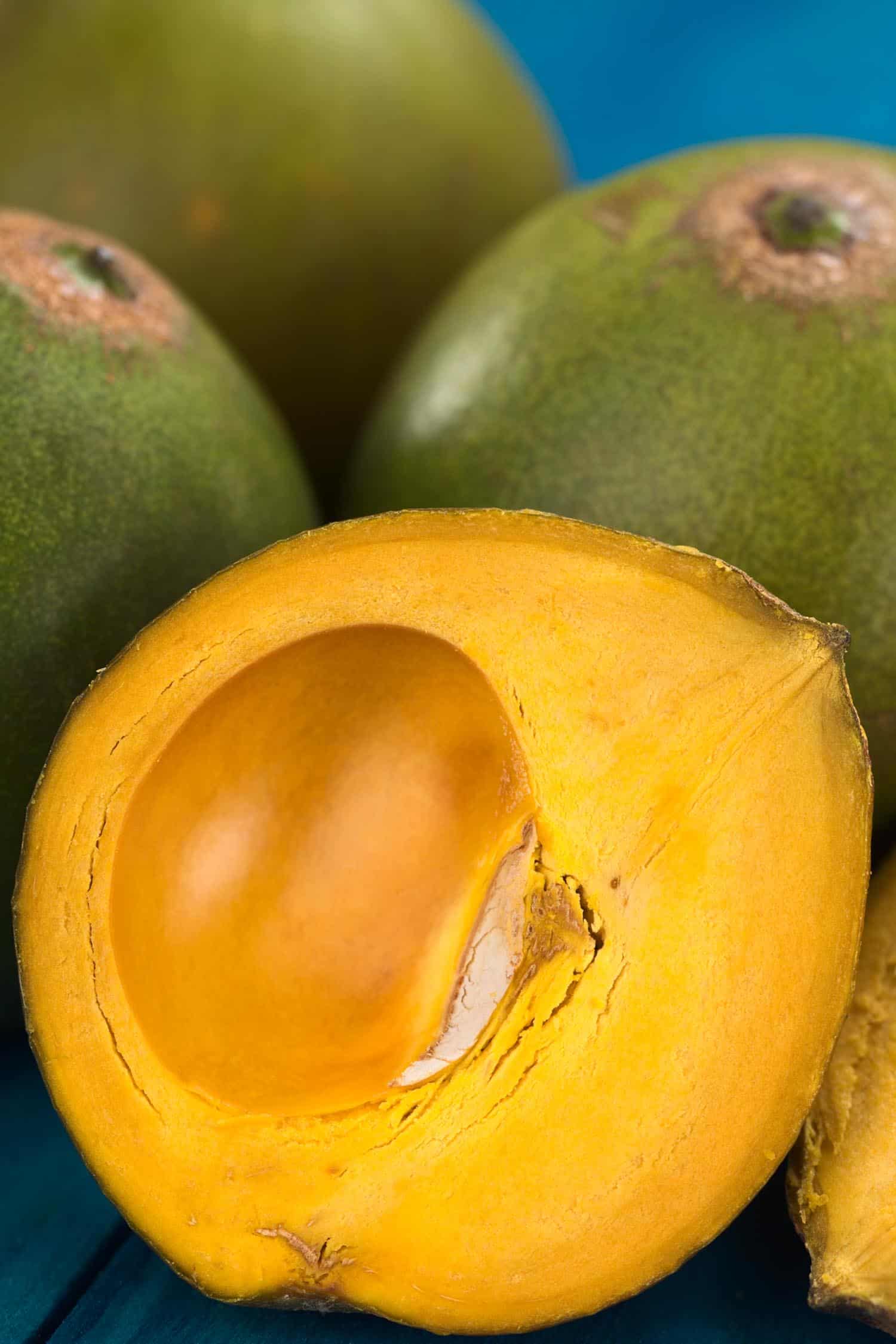
Eggfruit
Egg fruit, also known as canistel or lucuma is also commonly found in Peru, Central America and South East Asia where it’s a popular Lao fruit.
It isn’t the most attractive, but it is an interesting fruit as its texture is like a hard boiled egg yolk.
Its taste is more like pumpkin, squash or sweet potato. You can often find it in preserves, smoothies and desserts.
It’s well worth trying if you can find it.
Starfruit
Originally from Indonesian, Malaysia and a common Filipino food, starfruit flourish in Hawaii.
Starfruit season in Hawaii is September through April. They are easily found in farmer’s markets and people’s backyards.
They are often found in star slices on salads, served as juice, preserves, ice cream and syrup.
Noni
One of my favourite fruit in Hawaii because it’s so polarizing! No one likes the taste of noni but everyone loves noni.
It flourishes as the tree loves the volcanic soil. The Polynesians brought Noni to Hawaii and it’s been a very important fruit throughout the centuries.
Many believe that although it tastes like stinky feet or blue cheese it is worth the trouble as it can heal everything from allergies to cancer.
It is an important part of natural medicine in Hawaii. You can find it noni mixed with another fruit to make a juice or straight up as a tonic.
You can also find it in South East Asia and it’s a popular fruit in Bali despite its smell.
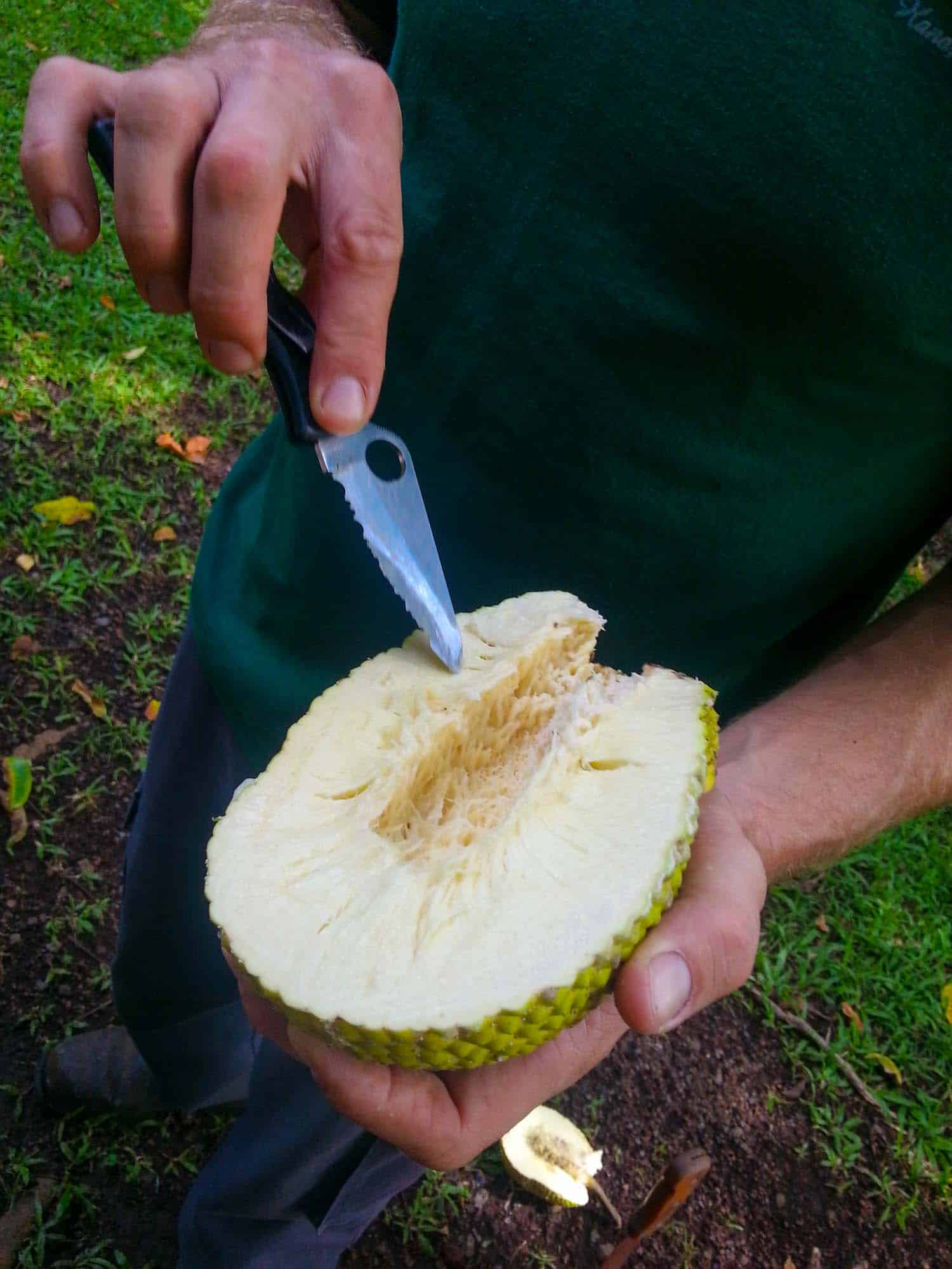
Breadfruit
Another miracle fruit in Hawaii that arrived with Polynesians, it’s one of my favourites.
Known as ulu, I first learned about it when visiting the Breadfruit Institute in Maui.
It is an incredibly nutritious fruit that could be used in countries dealing with hunger.
Here they have planted bread fruit trees from around the world to study them. They grow in tropical climates and are a popular Malaysian fruit.
Breadfruit may just be the perfect fruit.
It acts like a vegetable that can be cooked while young, becomes starchy like a potato when mature and then creamy like a delicious custard when overripe.
Breadfruit season in Hawaii runs from November through June.
There is a movement to encourage locals to start cooking with it again as it is so healthy and low on the glycemic scale.
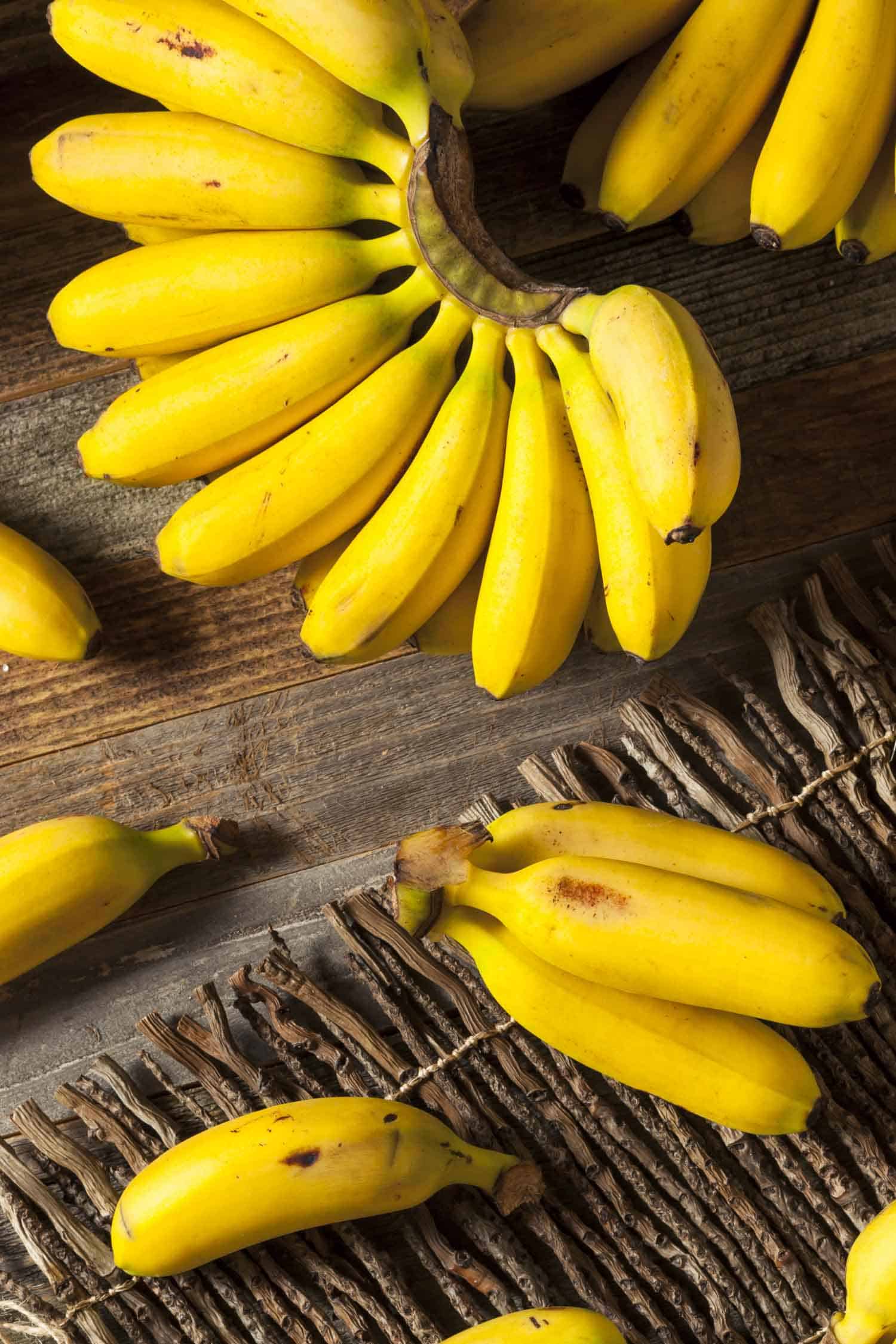
Bananas
While there are a thousand different kinds of bananas around the world, most only know the Cavendish banana, which are picked weeks before they are ripe.
We don’t think of bananas as a special fruit, but bananas in Hawaii will change your mind. Some of them aren’t even pink – and instead red and pink!
The darling of fruit platters, dragon fruit aren’t always the most flavourful but they are pretty.
Known as pitaya, they have a bright fuchsia exterior with a white flesh dotted with seeds. The flavour is mild like a melon or pear.
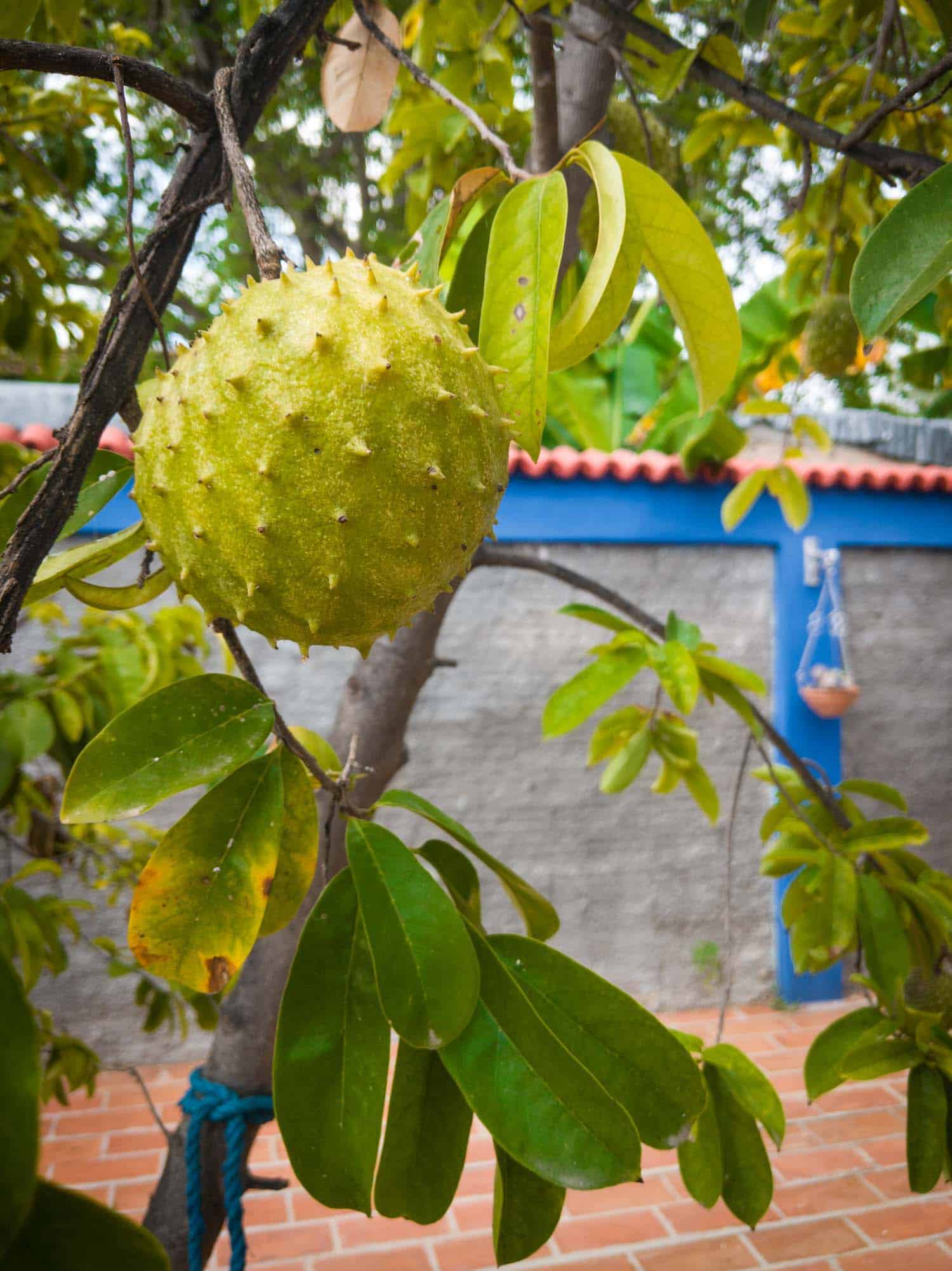
Soursop
This Hawaiian fruit has the most unfortunate name, it doesn’t sound appetizing at all.
But name aside, this fruit is like a tropical fruit punch. It tastes like a combination of strawberry, apple, kiwi with a bit of pineapple.
It is a powerhouse of antioxidants and phytochemicals, which many believe cure diseases.
Soursop is a giant fruit and so at markets you’ll see it cut into smaller more manageable pieces.
You can pull at its flesh and eat it raw like string cheese. It’s also a popular ice cream and fruit juice.
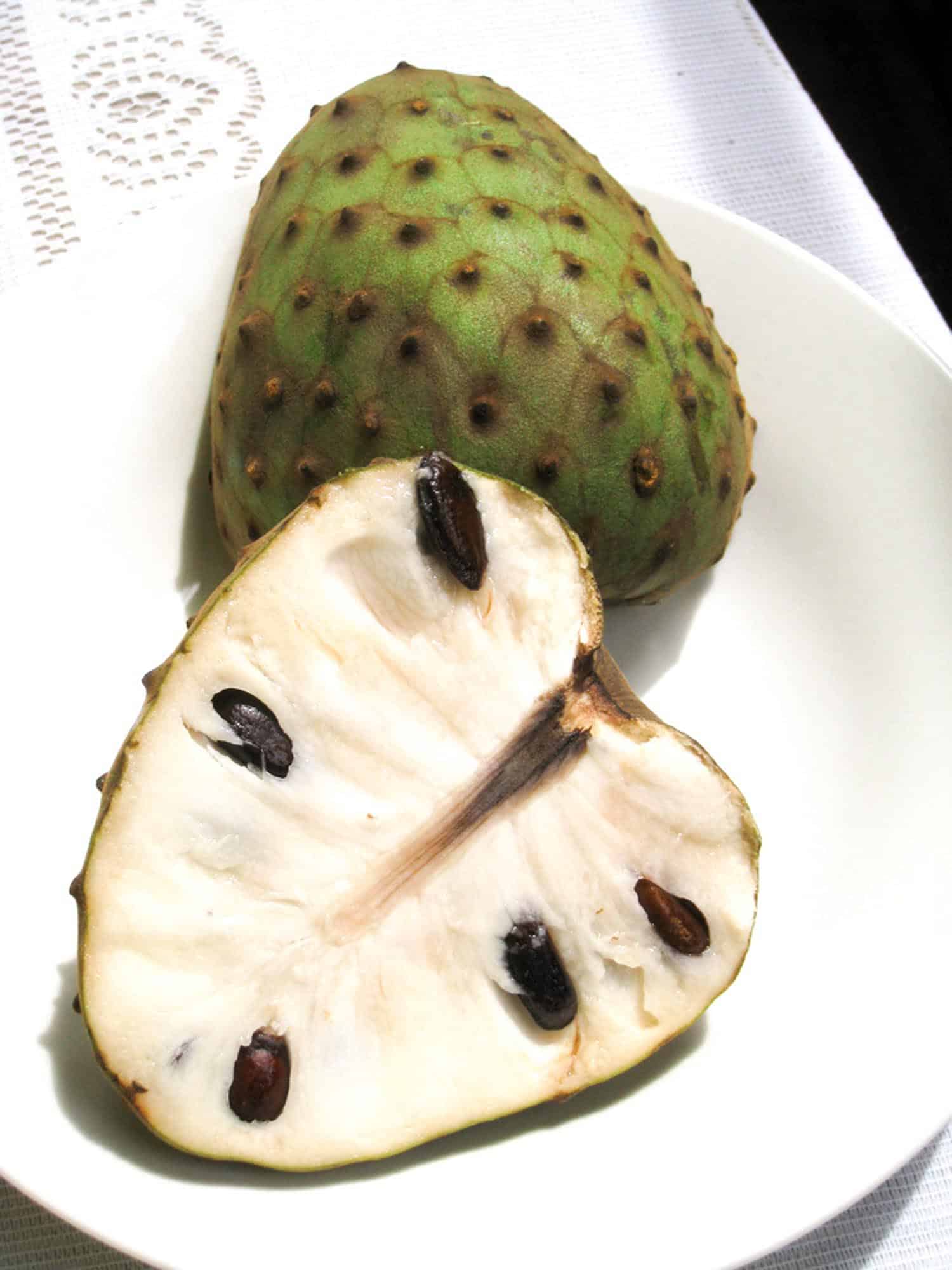
Cherimoya
Also known as a custard apple, but only because of it’s shape. The flavour is much more tropical and exotic like pineapple banana.
You have to be careful when eating it as the skin and seeds are toxic.
Originally from South America, its was so beloved it is now also in Africa, South Asia and Southern Europe.
It’s considered to be healing as it has a number of antioxidants and nutrients that many believe can cure a number of diseases.
If you like soursop you’ll love cherimoya.
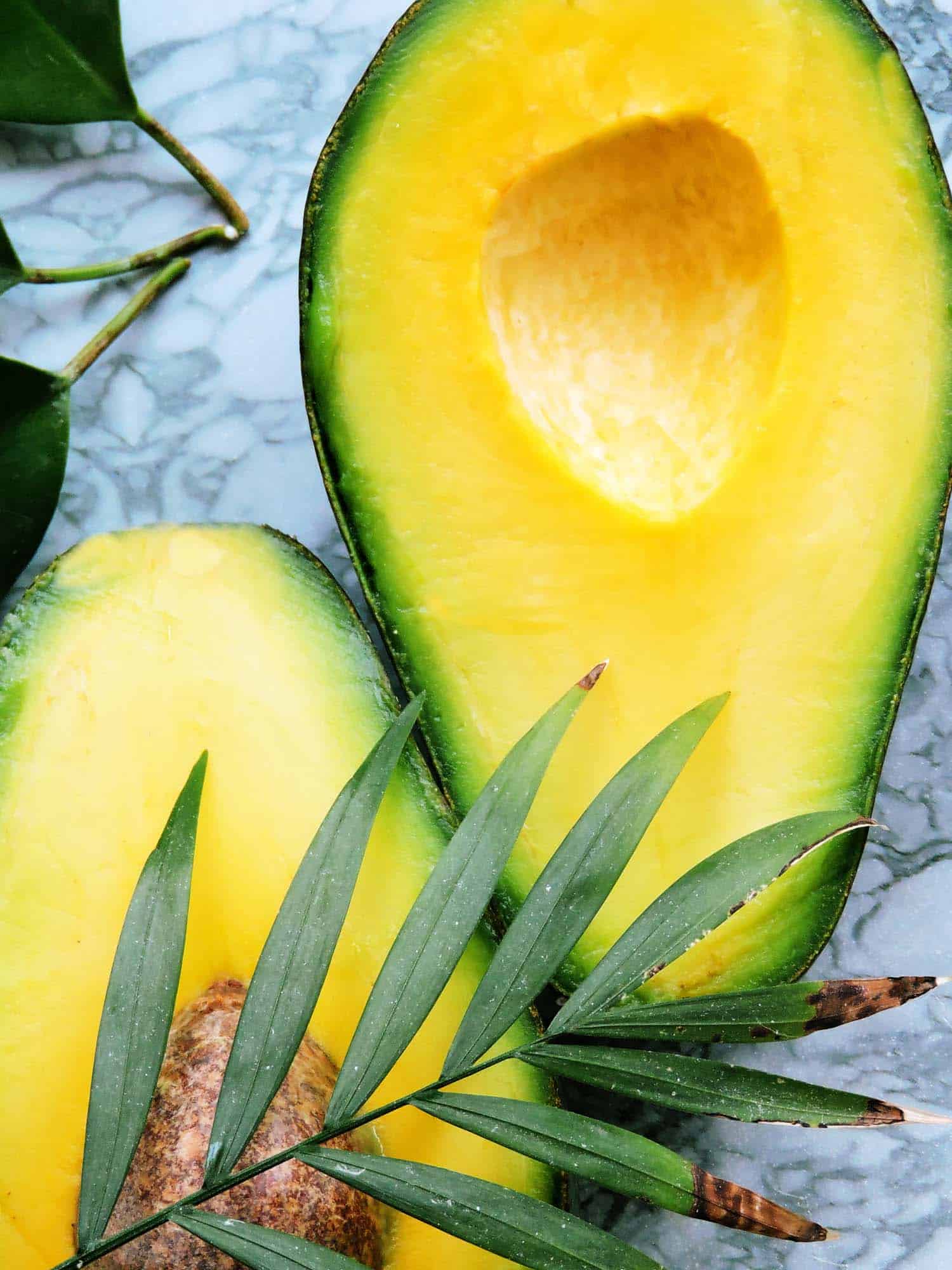
Avocado
If you’ve only ever had a Hass avocado you’re in for the ride of a lifetime.
Avocados grow prolifically in Hawaii. And they are 3-4 times the same size of a Hass, which means people use them for everything.
Avocado in Hawaii can be creamy and used as a substitute for mayonnaise. Avocado can also be fruity and perfect on salad with a bit of salt.
People often have them in their backyards growing wild and you’re never too far from one.
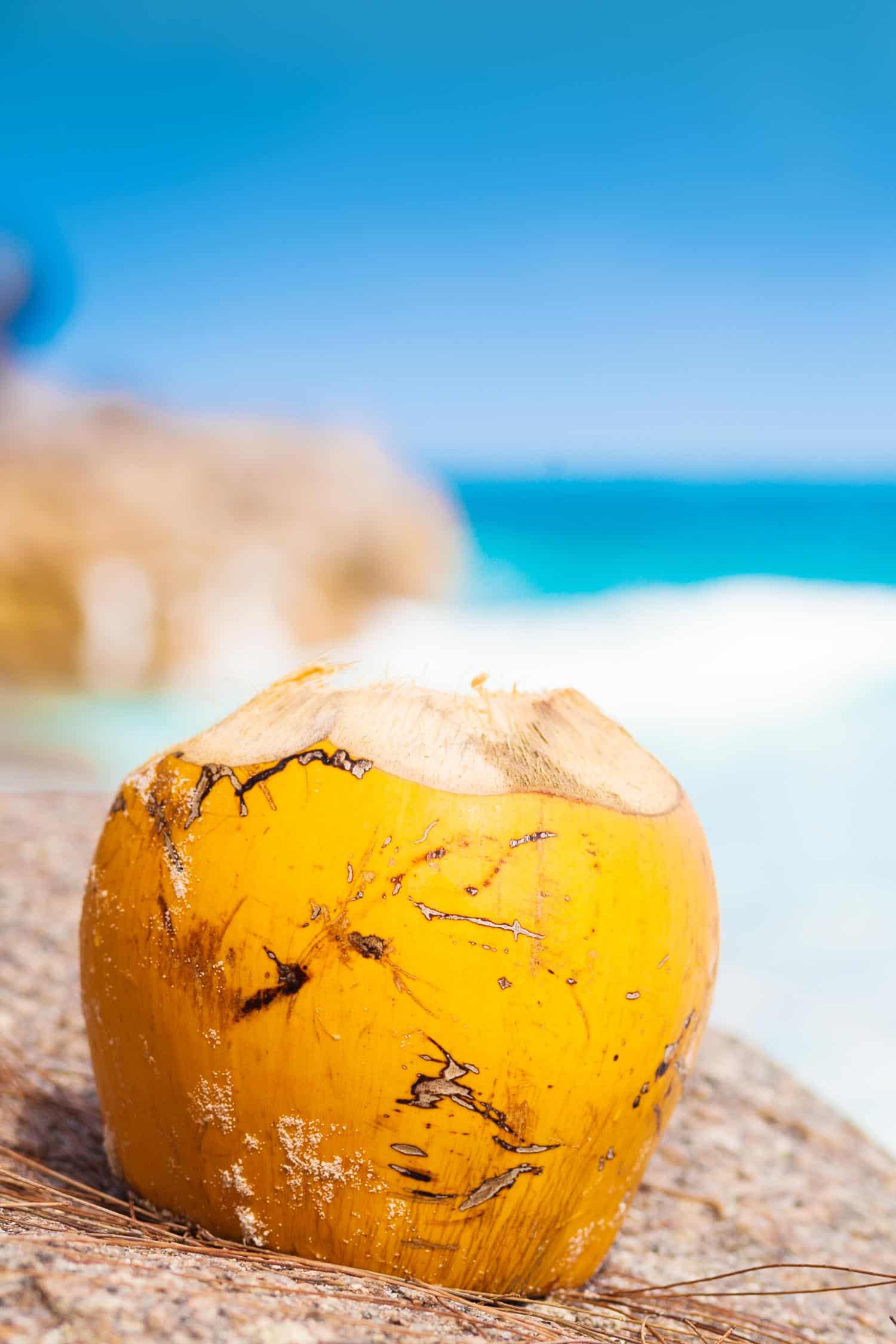
Coconut
So technically a coconut is not a fruit in Hawaii but actually a nut. But they are so delicious I wanted to include them anyway.
Did you know more people die from coconuts than sharks?
That’s why locals watch for them with a keen eye. They often cut down coconuts before they have a chance to do some damage.
Young coconuts are green and the source of hydrating coconut water, that we normally spend so much money for in boxes.
As they age they dry out and become the hairy brown coconut with tasty coconut meat.
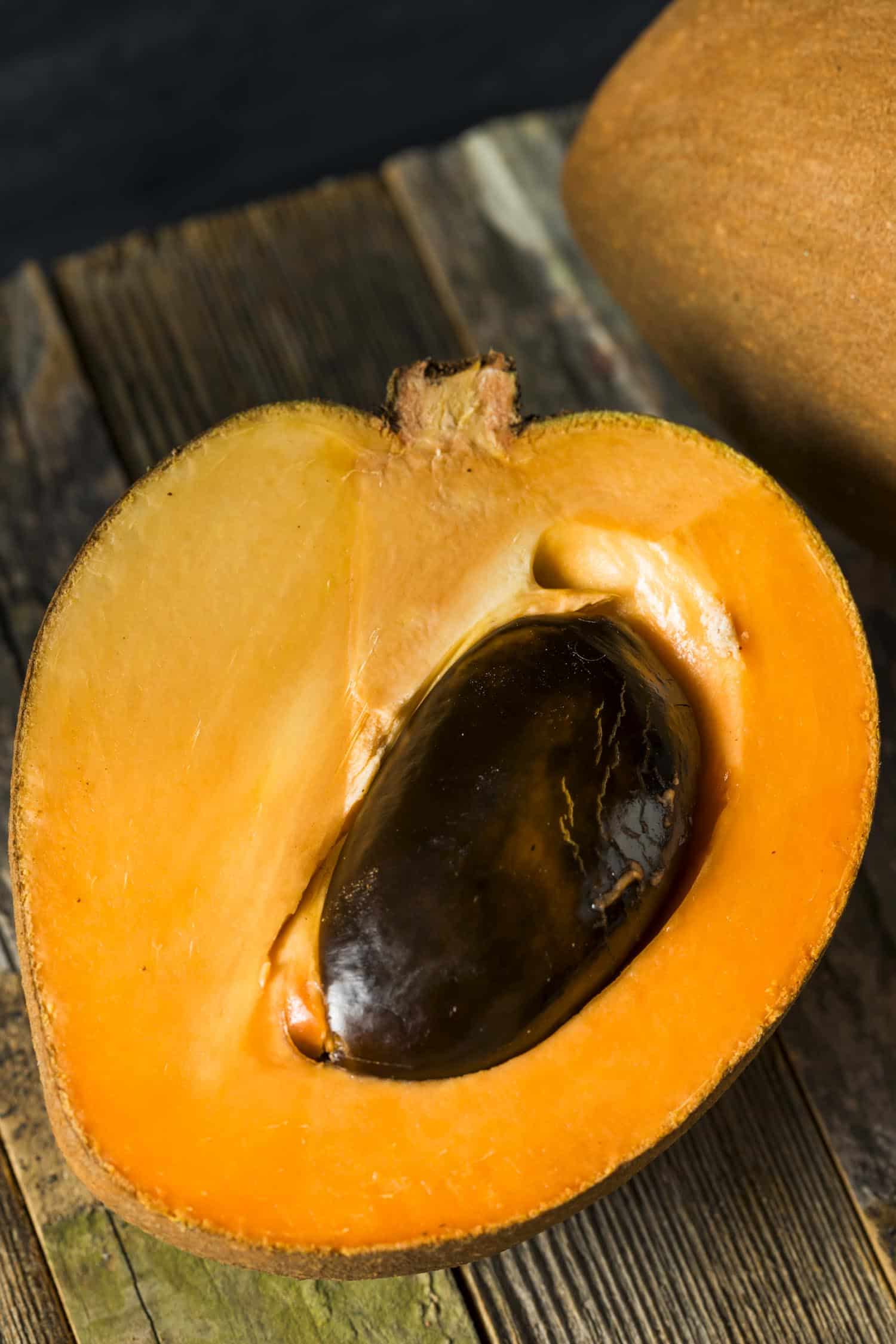
Sapote
You can find mamey sapote and it is so loved that it’s considered the national fruit of Cuba.
One of the more unusual Hawaiian fruits, it doesn’t have a citrus or tropical fruits flavour.
Instead it’s more like eggfruit in that it has a spicy flavour like cinnamon pumpkin or vanilla sweet potato.
It is about the size of an apple and with so many people on the pumpkin spice craze I don’t know why more people aren’t eating this fruit.
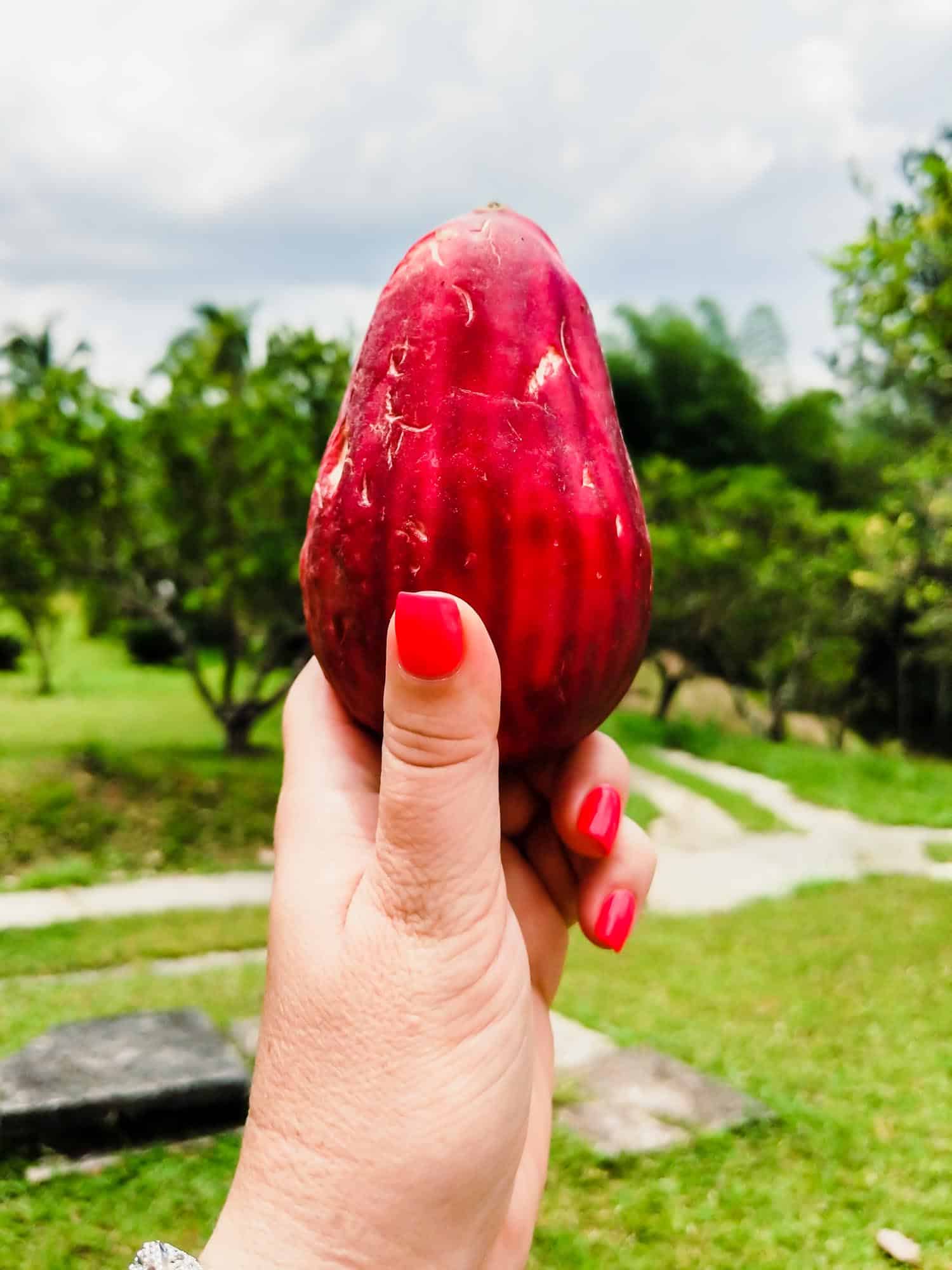
Mountain Apple
Mountain apple is common in Jamaica and Costa Rica.
It comes by many names such as manzana de agua (water apple), malay apple, rose apple, pommerac and Otaheite or Jamaican apple.
While it has an apple shape and colour, it’s much lighter in texture, weight and flavour.
It’s almost similar to the yellow round Chinese pears we see imported in grocery stores.
You can eat it raw and Puerto Ricans also use it to make a type of wine.
Loquat aka Biwa
One of the older fruit in Hawaii brought pre-1800 by Chinese immigrants. They aren’t as common in farmer’s markets and you may have to go Chinatown to find them.
A small oval stone fruit, loquats have a very tart flavour that is considered medicinal from a syrup for minor ailments to protecting the lungs.
In other countries it may be called Japanese plum, pipa or Japanese medlar
Loquat season in Hawaii is May through December.
Poha Berries
These yellow berries are often imported to the mainland to be fancy additions to fruit platters. They are the size of small cherry tomatoes.
But instead, poha berries are goldern with a wrapper that is similar to a tomatillo.
Outside fruit platters they are most often turned into preserves.
If you have other fruit in Hawaii you love let me know in the comment below!
Pin It: Exotic Fruit in Hawaii
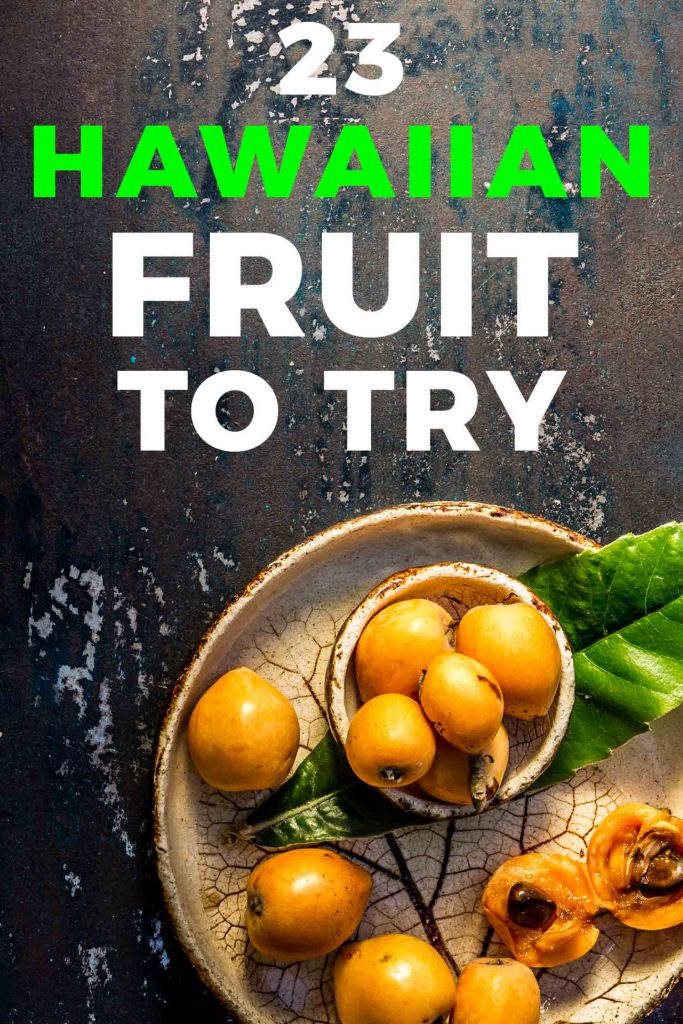
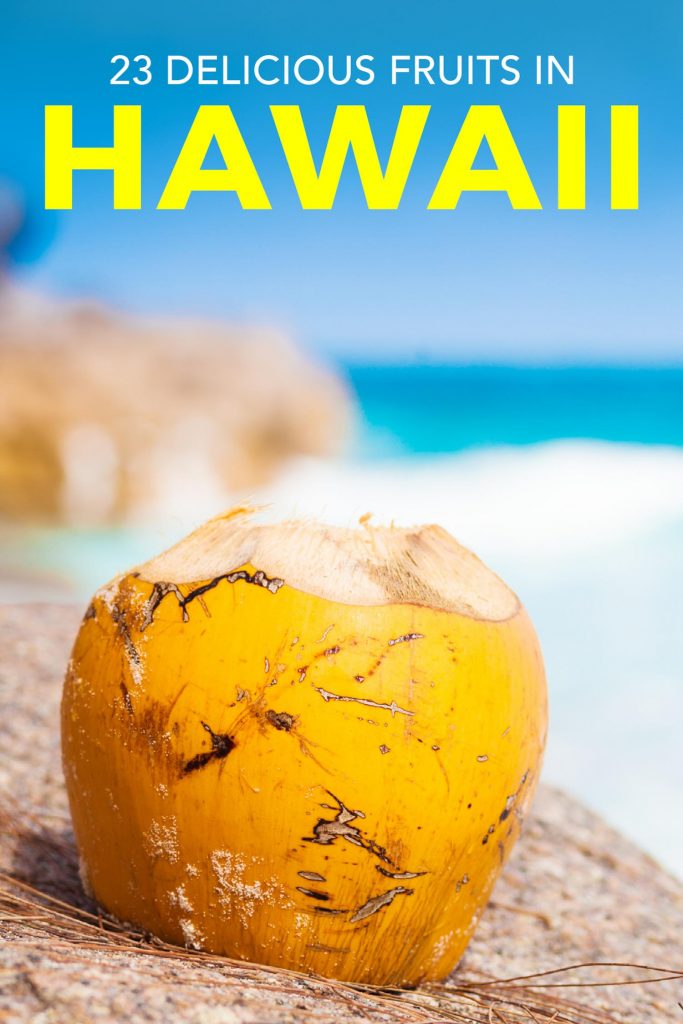
Additional images (c) Jennifer Pallian, Charles Deluvio, Miguel Maldonado, Fiona Smallwood, ella geiser, Abigail Lynn, Marissa Rodriguez, Cherimoya (c) Molly,
Comments are closed.
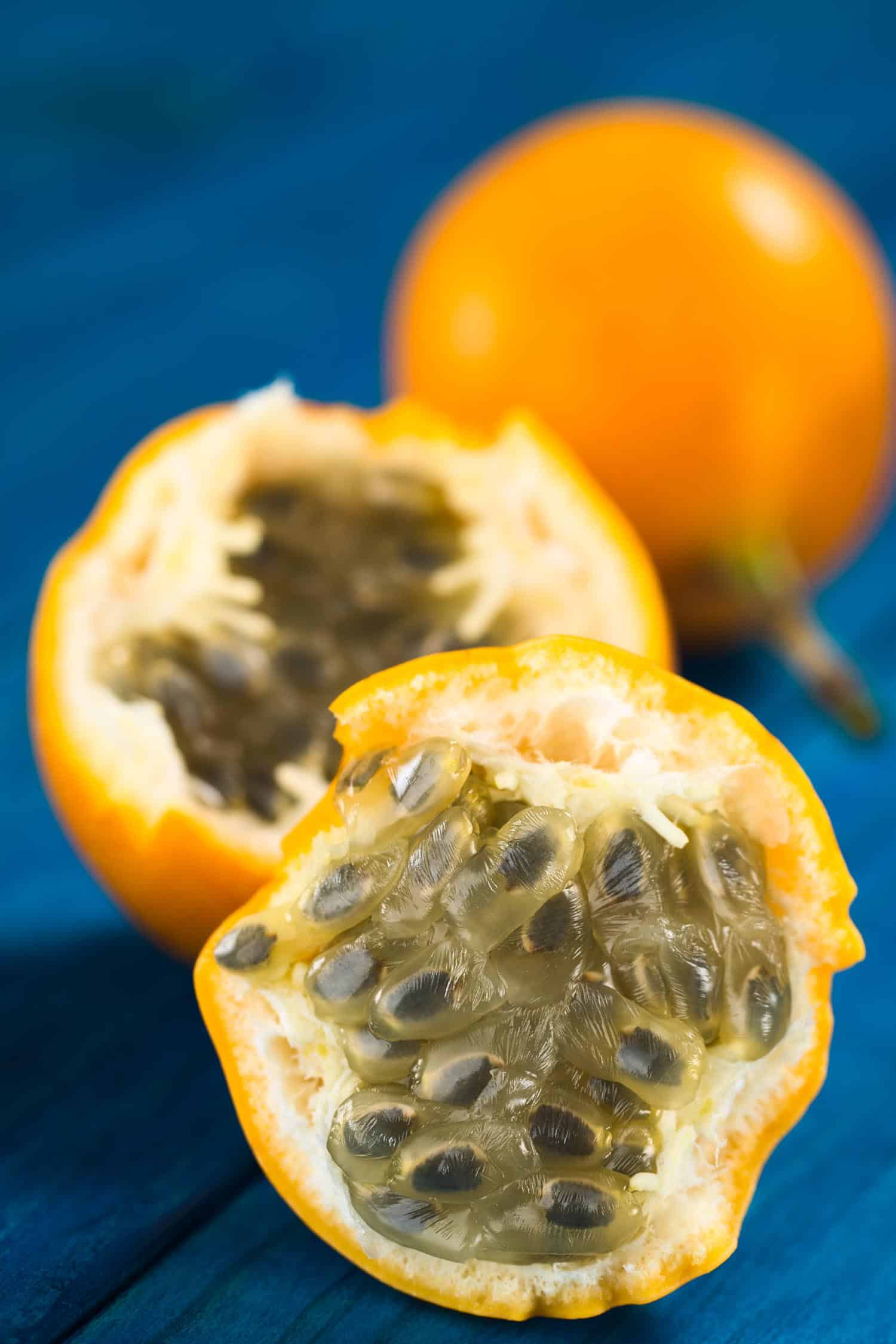
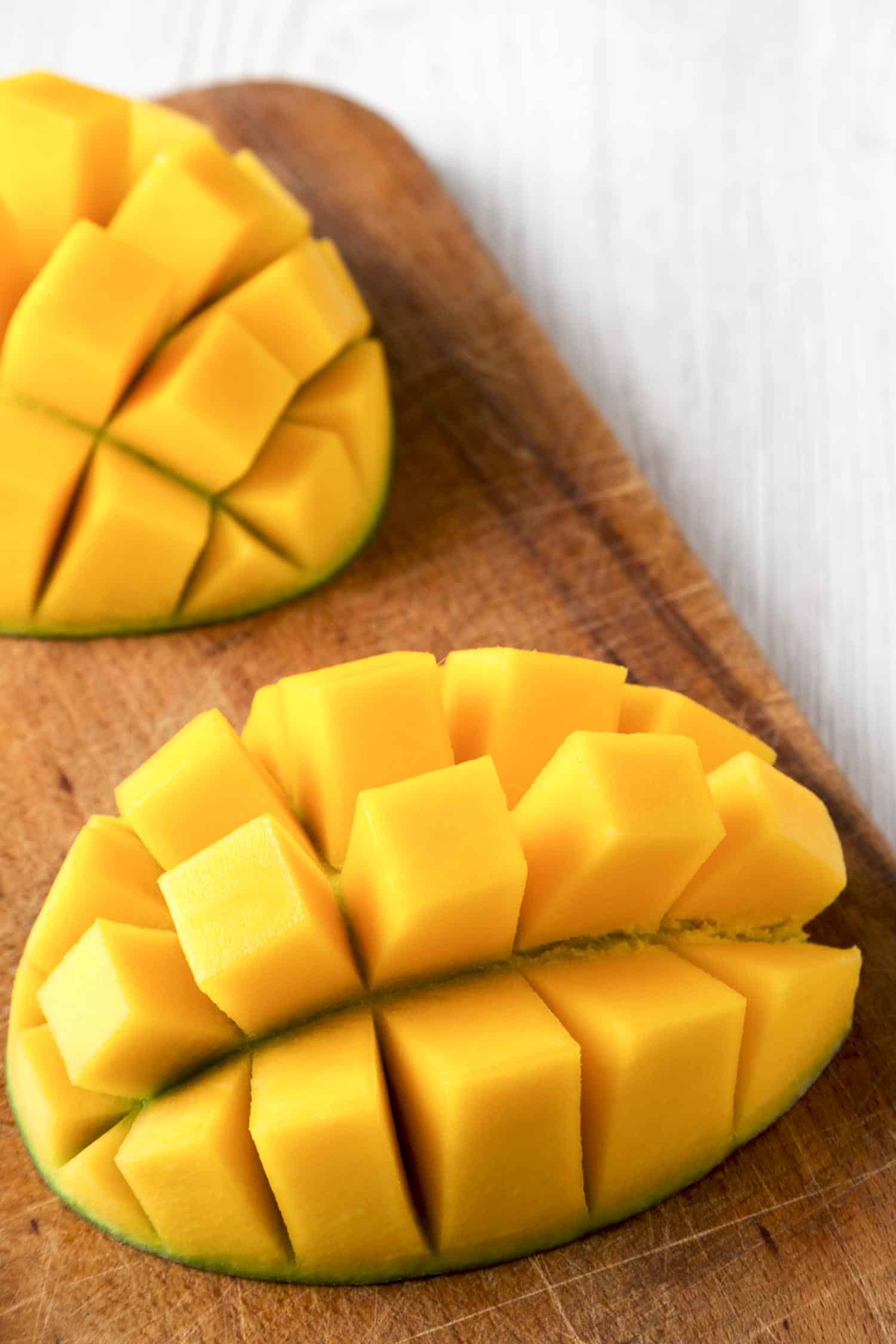
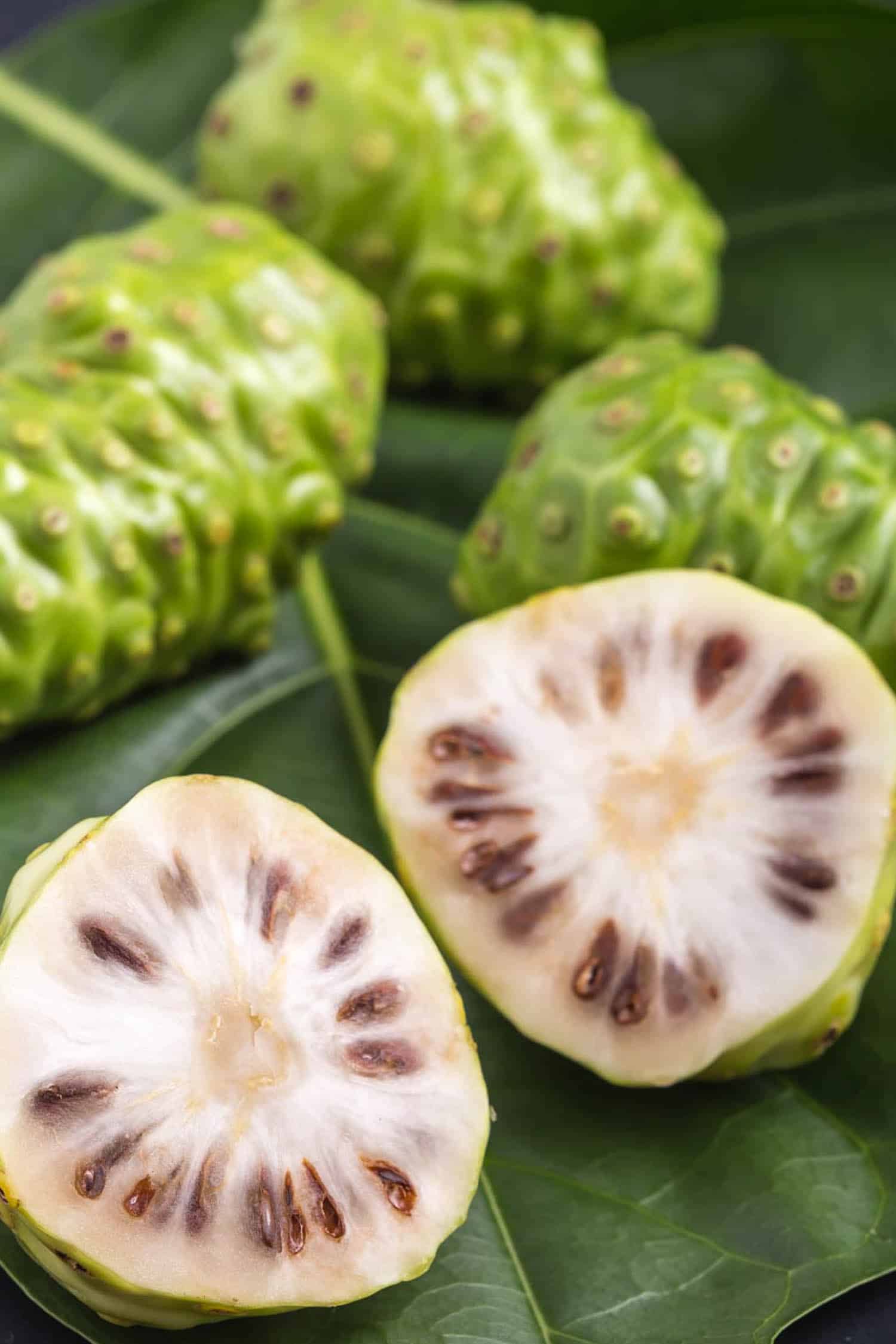
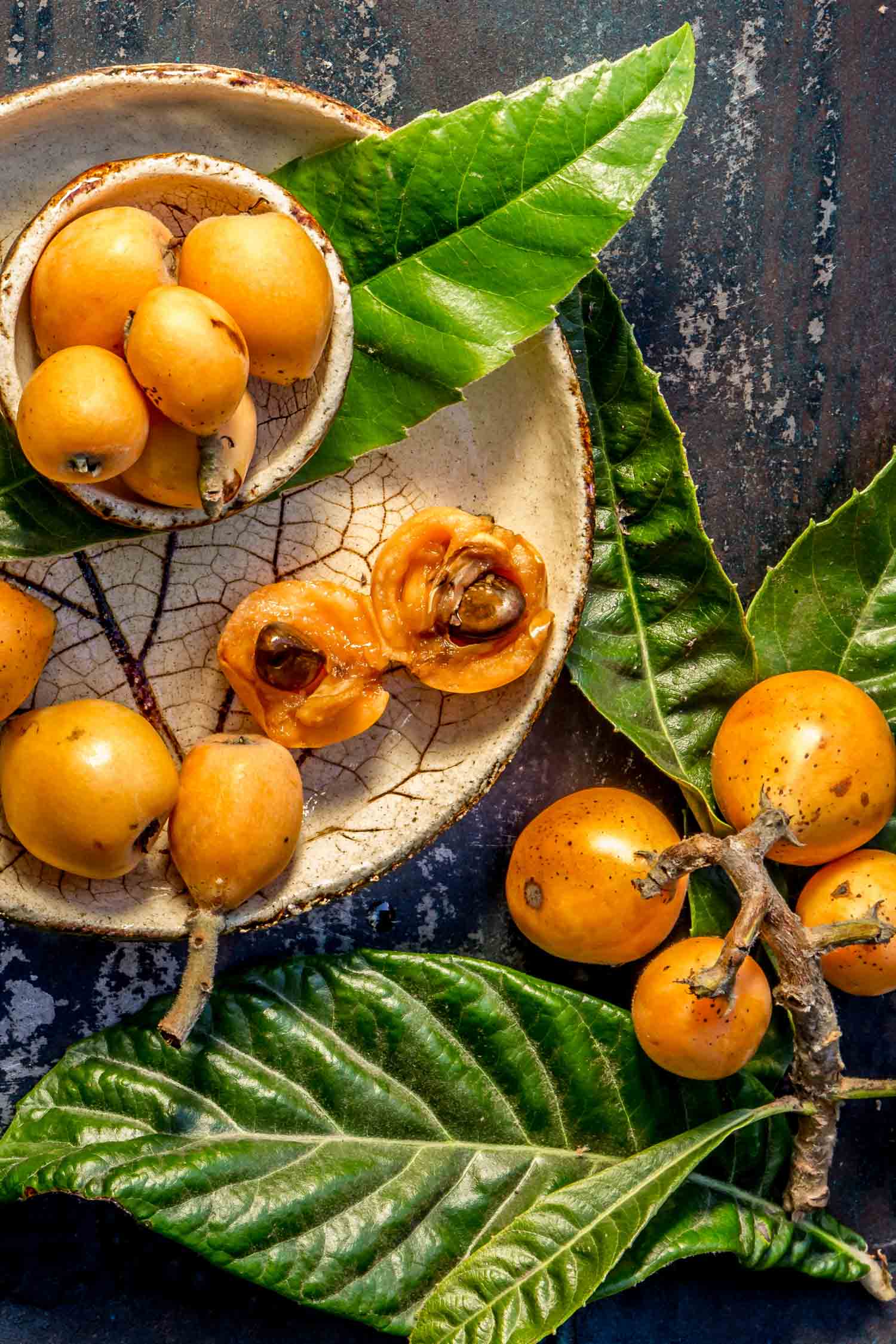
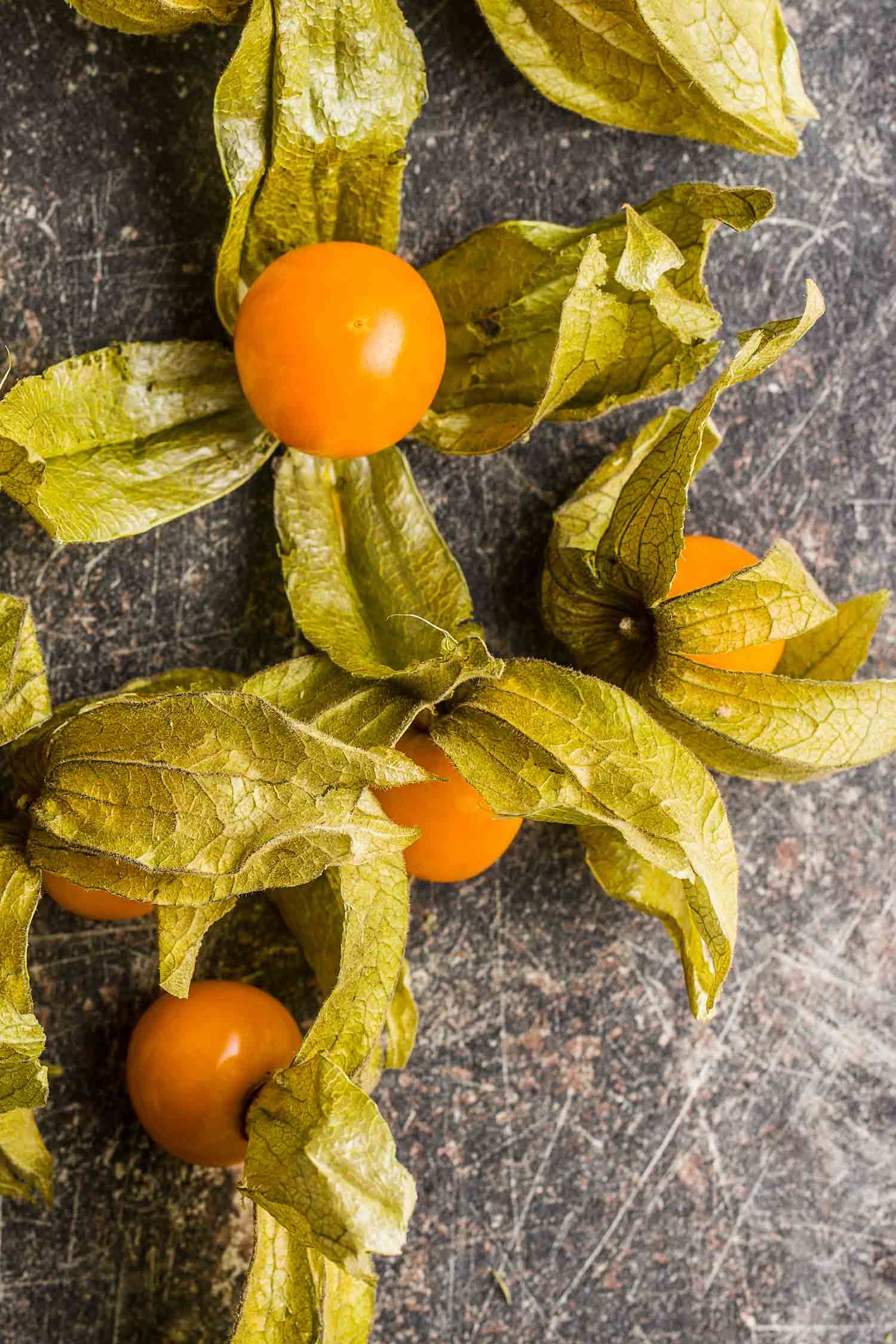
The pictures made me want to taste the fruit, very nice!
Nice article. I use to live in Colombia and while maracuya is the name for passion fruit in south america lulo is not. Lulo is a completely different kind of fruit. Both yummy though!
Oh interesting, what kind of fruit is Lulo in Colombia?
Have to make a correction here: We have may varieties of papaya here, unfortunately most are gmo, but I’ve never had one that tasted like stinky feet, nor have I ever in 40+ years heard anyone say that. My daughter prefers some of the sweeter varieties but they are all sweet and most people here find them quite delicious! Along with mangoes, apple bananas and avocados, they are a favorite back yard neighborhood trading fruit!
Hahaha I know, people think I’m crazy for thinking this. I have eaten papaya all over the world and every time I try it I have the same reaction.